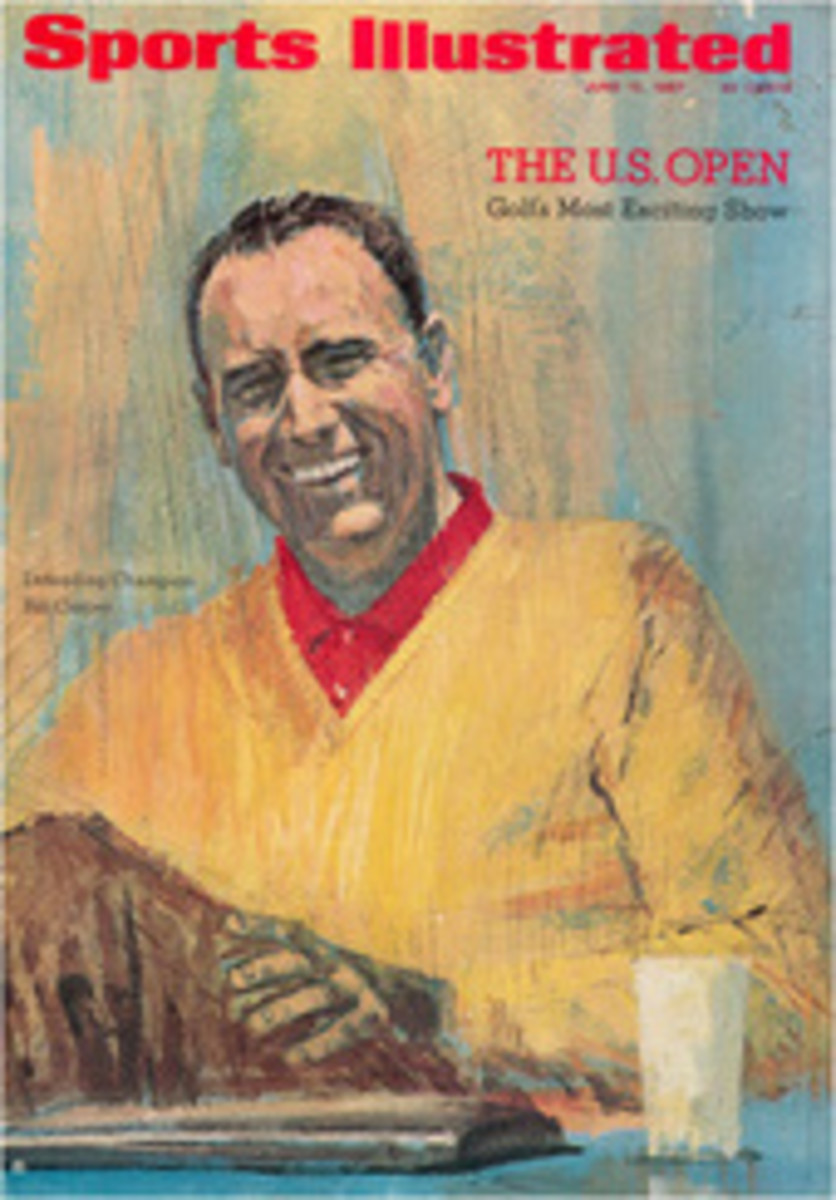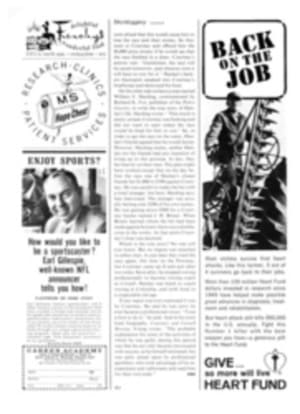
Some Skulduggery in the Single Sculls
The day dawned fair and unusually warm, and a good thing it was, too, for the few rooms available in little Mayville, N.Y., on the shores of Chautauqua Lake, were crammed to overflowing at rates running as high as $10 a day without meals. As a result many of the 30,000 rowing fans, gamblers, pickpockets, and just plain sports who had been pouring into town for a week slept alfresco so as to be on hand for the big match race between Oarsmen Edward Hanlan and Charles E. Courtney. Hanlan was Canadian born, 24 years old, fair-skinned, mustached, curly-haired and with eyes the color of a summer sky. His adversary and archrival, Courtney, was an American, swarthy-skinned, tall, lean and six years older than his opponent.
These two oarsmen, as famous in their day as Gene Tunney and Jack Dempsey were later, had been involved in a highly controversial race the year before, a race Courtney had been openly accused of "hippodroming," i.e., dumping. It had taken almost a year of delicate negotiation on the part of their backers to put them in action against each other again, a year of charge and countercharge, of intense press speculation and of heavy private betting.
Today, such heated interest in, of all things, professional rowing may seem farfetched. But in 1879 rowing was, outside of horse racing, the major American sport. Rowers, writes Robert F. Kelley, in his history of American rowing, "became as famous and well-publicized—and spoiled—as any well-known athlete of today."
So the atmosphere of the first encounter between Hanlan and Courtney at Lachine, Que., Canada, on October 3, 1878, was one of carnival. "Train after train crowded with passengers was running into Lachine over the single track of the Montreal Lachine Railroad," The New York Times reported. "The nine miles of wagon road were packed with carriages, all hurrying in one direction, and the canal was alive with steamers, gay with British and American flags. By 5 o'clock 10,000 persons were in the grandstand, and as many more were clustered on steamers, small boats and along the river bank."
But there was disquiet, too. The large amount of betting was leading to hasty rumors, and a postponement of the race because of rain led to more. "One misfortune of the delay," an observer wrote "is that it gives time for circulation of a renewed report that Courtney has sold out the race to Hanlan." Libel laws, it seems, were quite different then from what they are now.
On most books, Hanlan opened as the odds-on favorite and, by race time, the odds had increased. This despite the fact that Courtney was undefeated both as an amateur and as a professional. "Nonbetting men who are acquainted with the oarsmen," wrote the Evening Post correspondent, "express surprise that so great and long-continued odds should be offered on the Canadian."
The race finally got started late in the afternoon, just as the wind began to freshen. Hanlan, in his familiar red cap and blue shirt, started with a stroke of 31, while Courtney pulled 38 to the minute. Both used long, smooth strokes with a quick recovery at the end. For the first four miles the lead changed hands several times.
The first mile was clocked in seven minutes, the fourth in only six. "As they entered the last mile," according to a vivid but seemingly somewhat imaginative account in the Times, "Hanlan went slowly but surely to the front and at the half was leading by three lengths.... Here Courtney made a last terrible struggle and putting all his tremendous reserve power into his terrible telling strokes, crept up inch by inch and foot by foot in a way that would have given him the race had he kept it up to the end. But the strain was too great. He ran his bow to within a length and a half of Hanlan's stern part, but could get no nearer and Hanlan swept over the line the winner of the greatest scull race ever seen in this country."
Hanlan's time was 36:22, his margin of victory a length and a quarter. And if the Times account had been altogether accurate that would have been the end of it. But something had happened that the gentleman from the Times must have missed. Somehow he failed to mention the fact that near the finish both Hanlan and Courtney were headed for a group of boats that had wandered inside the racing lane. Hanlan slacked off for a moment, then shot around them and over the finish line. Courtney stopped rowing altogether, or at least long enough to lose his last hope of catching Hanlan.
Wrote Edward B. Rankin of the Boston Herald, who acted as a judge for Courtney and watched the race closely: "I venture the judgment now that Courtney is the better and more enduring sculler of the two, that despite the roughness of the water he succeeded, whenever he made the effort, in closing with Hanlan, and that at the finish he outraced the Toronto man, and only lost the race by ceasing to pull at a critical moment when nearing the goal."
The controversy raged for a year until it was agreed to settle matters once and for all in a new race at Mayville on October 19. On the day of the race when Courtney's handlers went to the boat-house to check his equipment, they found something that was to stir an even greater brouhaha than the disputed first race: the boat in which Courtney was to row had been neatly sawed three-quarters of the way through, 10 feet from the bow.
What had happened? To this day the partisans of each rower are giving different versions. In his biography of Courtney, C.V.P. Young quotes Charles S. Francis, editor of the Troy (N.Y) Times, and later Teddy Roosevelt's Ambassador to Austria-Hungary, as the authority. The way Francis told it, Hanlan, a bit of a playboy, had been out on the town the night before the race and had "listened to the voice of the charmer." His friends were afraid that this would cause him to lose the race and their money. So they went to Courtney and offered him the $6,000 prize money if he would see that the race finished in a draw. Courtney's answer was: "Gentlemen, the race will be raced tomorrow, and whoever wins it will have to row for it." Hanlan's backers thereupon sneaked into Courtney's boathouse and destroyed his boat.
On the other side we have a man named William E. Harding, commissioned by Richard K. Fox, publisher of the Police Gazette, to write the true story of Hanlan's life. Harding wrote: "This much is pretty certain: Courtney was funking and did not want to start unless the race would be fixed for him to win." So, in order to get the race on the water, Hanlan's friends agreed that he would dump. However, Harding insists, neither Hanlan nor his friends had any intention of living up to this promise. In fact, they bet heavily on their man. The plan might have worked except that on the day before the race one of Hanlan's closest friends bet $1,000 to $700 against Courtney. He was careful to make the bet with a total stranger, but here, Harding says, fate intervened. The stranger was actually betting only $200 of his own money. He was getting down $500 for a Courtney backer named J. H. Brister. When Blister learned whom the bet had been made against he knew there was a double-cross in the works. At that point Courtney's boat was doomed.
Which is the true story? No one will ever know. But no stigma was attached to either man. A year later they tried the race again, this time on the Potomac, but Courtney came up ill and quit after two miles. Soon after, he stopped rowing professionally to become rowing coach at Cornell. Hanlan was hired to coach rowing at Columbia, and both lived to a respectable old age.
If any regret was ever expressed it was by Courtney. He said he was sorry he ever became a professional rower. "I was a fool to do it," he said. And in his most kind biography, Courtney and Cornell Rowing, Young wrote: "The probable explanation for some of the activities of which he was guilty during this period was that he not only became intoxicated with success, as he himself intimated, but was early seized upon by professional gamblers, who took advantage of his inexperience and callowness and used him for their own ends."

